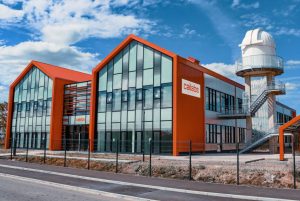Spatial Mode Division Multiplexing of Free-Space Optical Communications Using a Pair of Multiplane Light Converters and a Micromirror Array for Turbulence Emulation
Photonics 2024
Authors: David Benton, Yiming Li, Antonin Billaud and Andrew Ellis
1 Aston Institute of Photonic Technologies, Aston University, Aston Triangle, Birmingham B4 7ET, UK
2 Cailabs, 1 Rue Nicolas Joseph Cugnot, 35000 Rennes, France
Abstract
Multi-plane light converters (MPLC) are a means of deconstructing a wavefront into constituent modes that are focused at specific spatial locations, and the reverse—that specific inputs result in controlled modal output. We have used a pair of MPLCs with 21 Hermite–Gaussian modes to represent a free-space optical connection. The effects of strong atmospheric turbulence (Cn2 = 10−13 m−2/3) are emulated using a micromirror array producing a time sequence of aberrating frames. The modal crosstalk between transmitter and receiver modes induced by the turbulence is presented by measuring the intensity in receiver channels for the same turbulence. Six receiver modes are used for optical communication channels with a rate of 137 Gbits/s displaying the benefits of single input multiple output (SIMO) operation for overcoming the deleterious effects of turbulence.
